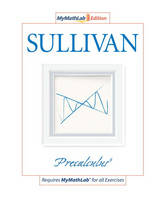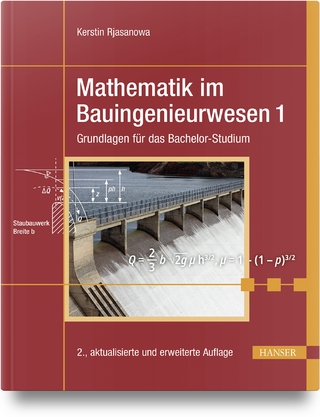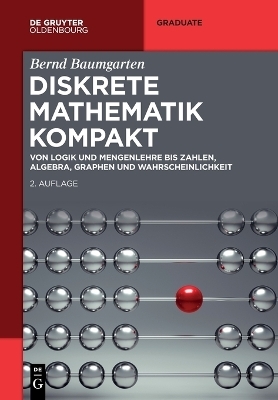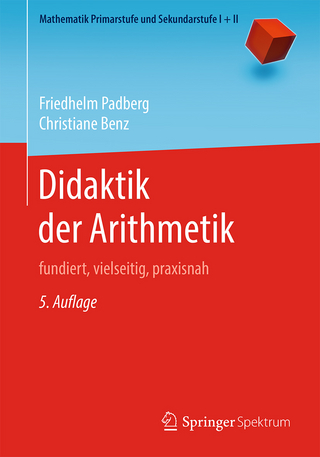
Precalculus, The MyLab Math Edition
Pearson (Verlag)
978-0-13-612788-8 (ISBN)
- Titel ist leider vergriffen;
keine Neuauflage - Artikel merken
TABLE OF CONTENTS
Chapter 1 Graphs
1.1 The Distance and Midpoint Formulas
1.2 Graphs of Equations; Intercepts; Symmetry
1.3 Lines
1.4 Circles
Chapter 2 Functions and Their Graphs
2.1 Functions
2.2 The Graph of a Function
2.3 Properties of Functions
2.4 Library of Functions; Piecewise-defined Functions
2.5 Graphing Techniques: Transformations
2.6 Mathematical Models: Building Functions
Chapter 3 Linear and Quadratic Functions
3.1 Linear Functions and Their Properties
3.2 Building Linear Functions from Data
3.3 Quadratic Functions and Their Properties
3.4 Quadratic Models; Building Quadratic Functions From Data
3.5 Inequalities Involving Quadratic Functions
Chapter 4 Polynomial and Rational Functions
4.1 Polynomial Functions and Models
4.2 Properties of Rational Functions
4.3 The Graph of a Rational Function
4.4 Polynomial and Rational Inequalities
4.5 The Real Zeros of a Polynomial Function
4.6 Complex Zeros: Fundamental Theorem of Algebra
Chapter 5 Exponential and Logarithmic Functions
5.1 Composite Functions
5.2 One-to-One Functions; Inverse Functions
5.3 Exponential Functions
5.4 Logarithmic Functions
5.5 Properties of Logarithms
5.6 Logarithmic and Exponential Equations
5.7 Compound Interest
5.8 Exponential Growth and Decay Models; Newton’s Law; Logistic Growth and Decay Models
5 .9 Building Exponential, Logarithmic, and Logistic Functions from Data
Chapter 6 Trigonometric Functions
6.1 Angles and Their Measure
6.2 Trigonometric Functions: Unit Circle Approach
6.3 Properties of the Trigonometric Functions
6.4 Graphs of the Sine and Cosine Functions
6.5 Graphs of the Tangent, Cotangent, Cosecant, and Secant Functions
6.6 Phase Shift; Building Sinusoidal Functions from Data
Chapter 7 Analytic Trigonometry
7.1 The Inverse Sine, Cosine, and Tangent Functions
7.2 The Inverse Trigonometric Functions (continued)
7.3 Trigonometric Identities
7.4 Sum and Difference Formulas
7.5 Double-Angle and Half-Angle Formulas
7.6 Product-to-Sum and Sum-to-Product Formulas
7.7 Trigonometric Equations (I)
7.8 Trigonometric Equations (II)
Chapter 8 Applications of Trigonometric Functions
8.1 Right Triangle Trigonometry; Applications
8.2 Law of Sines
8.3 Law of Cosines
8.4 Area of a Triangle
8.5 Simple Harmonic Motion; Damped Motion; Combining Waves
Chapter 9 Polar Coordinates; Vectors
9 .1 Polar Coordinates
9 .2 Polar Equations and Graphs
9.3 The Complex Plane; DeMoivre’s Theorem
9 .4 Vectors
9 .5 The Dot Product
9.6 Vectors in Space
9.7 The Cross Product
Chapter 10 Analytic Geometry
10.1 Conics
10.2 The Parabola
10.3 The Ellipse
10.4 The Hyperbola
10.5 Rotation of Axes; General Form of a Conic
10.6 Polar Equations of Conics
10.7 Plane Curves and Parametric Equations
Chapter 11 Systems of Equations and Inequalities
11.1 Systems of Linear Equations: Substitution and Elimination
11.2 Systems of Linear Equations: Matrices
11.3 Systems of Linear Equations: Determinants
11.4 Matrix Algebra
11.5 Partial Fraction Decomposition
11.6 Systems of Nonlinear Equations
11.7 Systems of Inequalities
11.8 Linear Programming
Chapter 12 Sequences; Induction; The Binomial Theorem
12.1 Sequences
12.2 Arithmetic Sequences
12.3 Geometric Sequences; Geometric Series
12.4 Mathematical Induction
12.5 The Binomial Theorem
Chapter 13 Counting and Probability
13.1 Sets and Counting
13.2 Permutations and Combinations
13.3 Probability
Chapter 14 A Preview of Calculus: The Limit, Derivative, and Integral of a Function
14.1 Finding Limits Using Tables and Graphs
14.2 Algebra Techniques for Finding Limits
14.3 One-sided Limits; Continuous Functions
14.4 The Tangent Problem; The Derivative
Appendix A Review
A1 Algebra Essentials
A.2 Geometry Essentials
A.3 Polynomials and Rational Expressions
A.4 Polynomial Division; Synthetic Division
A.5 Solving Equations
A.6 Complex Numbers; Quadratic Equations in the Complex Number System
A.7 Problem Solving: Interest, Mixture, Uniform Motion, and Constant Rate Jobs Applications
A.8 Interval Notation; Solving Inequalities
A.9 nth Roots; Rational Exponents; Radical Equations
Appendix B Graphing Utilities
B.1 The Viewing Rectangle
B.2 Graphing Equations in Two Variables
B.3 Locating Intercepts and Checking for Symmetry
B.4 Solving Equations Using a Graphing Utility
B.5 Square Screens
B.6 Graphing Inequalities in Two Variables
B.7 Solving Systems of Linear Equations
B.8 Graphing a Polar Equation
B.9 Graphing Parametric Equations
| Erscheint lt. Verlag | 28.11.2007 |
|---|---|
| Sprache | englisch |
| Maße | 216 x 279 mm |
| Themenwelt | Mathematik / Informatik ► Mathematik |
| ISBN-10 | 0-13-612788-6 / 0136127886 |
| ISBN-13 | 978-0-13-612788-8 / 9780136127888 |
| Zustand | Neuware |
| Haben Sie eine Frage zum Produkt? |
aus dem Bereich


